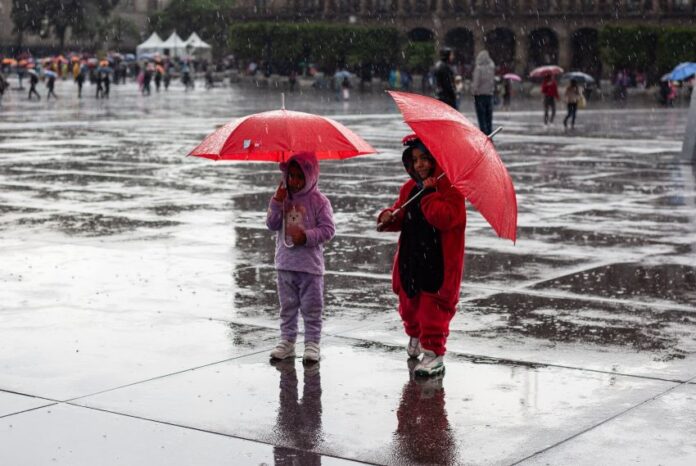Above-average rainfall in several regions of Mexico in the first half of June has finally alleviated some of the widespread drought felt across the country in recent months, the National Water Commission (Conagua) reported on Wednesday.
May 15 marked the beginning of the rainy season, which, after one month, has reduced the area of Mexico affected by abnormally dry or drought-level conditions from 67.8% to 54.4%.

Drought in Mexico is measured on a scale of D0 — abnormally dry — to D4 — extreme drought. As of June 15, the percentage of the country experiencing moderate to exceptional drought conditions fell to 37.5%, well below the 73.79% recorded on the same date in 2024.
The widespread above-average rainfall was driven by various meteorological phenomena, according to Conagua, including the passage of two tropical waves and low-pressure troughs. The circulation and cloud formations of Tropical Storm Dalila brought heavy rainfall along Mexico’s Pacific coast (Hurricane Erick made landfall following the publication of the most recent Conagua report).
Extreme and exceptional drought (D3 and D4) also decreased in the states of Sonora and Chihuahua, while moderate drought (D1) and abnormally dry conditions (D0) subsided in western, central and southern Mexico.
Only the north, northeast and southeast, including the Yucatán Peninsula, saw an increase in abnormally dry conditions due to a heatwave early in the month.
The June 15 Conagua report showed that 16.9% of the country was abnormally dry (D0), 10.7% was experiencing moderate drought (D1), 8.1% severe drought (D2), 11.8% extreme drought (D3) and 6.9% exceptional drought (D4).
With reports from Excelsior
